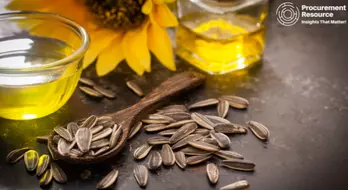The FAO food price index witnessed a significant rise in July 2025, especially for vegetable oils and meat

Global food commodity prices continued their upward trajectory in July, reaching the highest level recorded in over two years, according to a report from the United Nations Food and Agriculture Organization. The FAO Food Price Index, which serves as a critical benchmark for international food prices, averaged 130.1 points during the month, marking a 1.6 percent increase from June and standing 7.6 percent higher than its value one year earlier. This overall increase was primarily propelled by sharp rises in vegetable oil and meat prices, which more than compensated for noticeable declines in the cereals, dairy, and sugar sectors. Nevertheless, the index remained substantially below (by 18.8 percent) the historic peak it reached in March 2022 following the outbreak of war in Ukraine.
The most significant monthly increase was observed in vegetable oils, where the price index surged by 7.1 percent to hit a three-year high. This jump was largely driven by stronger global demand and tightening supplies for palm, soy, and sunflower oils. In the meat sector, prices climbed to a new all-time high, with bovine and ovine meats leading the gain. This strength was underpinned by robust import purchasing, particularly from China and the United States, which strained against limited export availabilities from key producing regions.
Read More About Sunflower Oil Production Cost Reports - Get Free Sample Copy in PDF
These increases stood in stark contrast to other major food commodities. Cereal prices, for instance, fell to their lowest point in almost five years, weighed down by abundant harvests of winter wheat in the Northern Hemisphere. Similarly, rice prices declined due to ample exportable supplies and lackluster import demand. Elsewhere, the dairy index registered a marginal decline, its first since April, as lower prices for butter and milk powders outweighed continued strength in cheese. Finally, sugar quotations extended their downward trend for a fifth consecutive month, reflecting market expectations of a sizable rebound in global production during the upcoming season.



.webp)